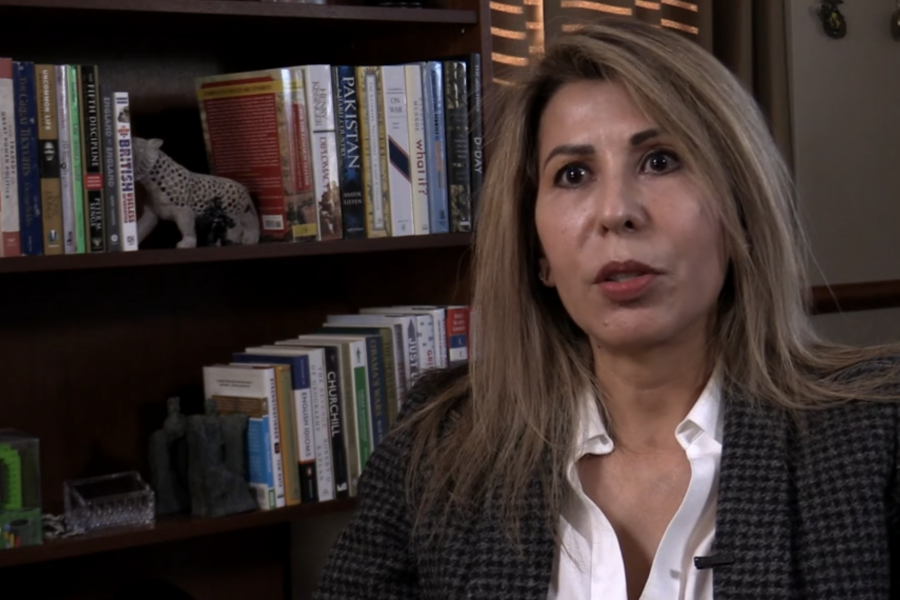Air Combat Command is pursuing four lines of effort to enhance diversity and inclusion among its force, according to an excerpt from its newly issued Diversity and Inclusion Strategic Plan, obtained by Air Force Magazine on Feb. 19. The plan, which has not been publicly released, was issued the same day.
“These lines of effort provide the framework for advancing diversity and inclusion and for building measures of accountability to ensure the enterprise attracts and leverages elite talent from diverse communities to compete and win for the nation,” the excerpt stated. The LOEs are also meant to give the command’s D&I professionals “a strategic outlook” to help them devise future operational plans and quantify the command’s progress and performance, it added.
Firstly, ACC wants to overhaul its “organizational culture and climate” to cultivate inclusion across all of its “environments, programs, policies, processes, and procedures,” and nix any aspects of the command’s culture and/or way of doing business that might impede diversity and inclusion, the excerpt explained. This priority entails making sure the command’s “vision and strategy” for enhancing D&I lines up command priorities, pinpointing “artificial” obstacles to these goals, enabling open conversations so all voices can feel valued, and changing up the way ACC communicates within and outside of the command to make it clear that D&I is “an operational imperative,” according to the excerpt.
During a Feb. 19 interview with Air Force Magazine, inaugural ACC Diversity and Inclusion Officer Rachel Castellon said this means “recognizing that we need to be inclusive, and we need to do it in an enduring kind of way through the communications that we have, through review of our policies, our procedures, [and] the way that we set up our environments and programs.”
Secondly, the command looks to work diversity and inclusion into the way it attracts, recruits, develops, and evaluates uniformed personnel and civilians, as well as into how it chooses people for jobs, the excerpt said. This line of effort includes identifying “diversity gaps in ACC career fields and ACC key leadership positions and methods to ensure consideration of all talent prior to hiring,” and committing “fully to promoting ACC career fields, especially to fill high demand, low density specialties,” the command wrote.
“As you know, with Air Combat Command, we have a lot of the … operational side, and so we have to look really closely at how our representation falls there, and then what can we do to make it more reflective of American society, ’cause that’s where, you know, obviously, we get our Airmen,” Castellon said.
Thirdly, the excerpt said, the command aims to make sure that its “training environments reflect and defend diversity and inclusion,” and that leaders and troops understand why these values are vital to national security. This line of effort entails teaching Airmen how different issues “relating to culture, ethnicity, class, race, and gender” are connected, teaching command employees and leaders how to cultivate and keep up “a diverse and inclusive culture,” and working in D&I principles into the command’s “community engagement and organizational collaboration” to make its operations more effective, the command wrote.
Since ACC must “be enticing” to Americans who are job-hunting, but who want to feel confident that an organization’s culture is healthy before taking the leap and applying for an opportunity, Castellon said “education and training will help” the command make sure Airmen know both USAF’s and ACC’s stances on caring for Airmen in terms of diversity, inclusion, and equity.
Lastly, ACC is focused on making sure the progress it makes will last, the excerpt explained. This final line of effort includes creating an enterprise-wide D&I infrastructure “to build institutional stability,” figuring out “metrics and measures” the command can use to assess the performance and impact of its diversity and inclusion efforts, and evaluating its “talent management and organizational culture to maximize ACC’s ability to translate increased diversity and improved inclusion,” the excerpt said.
“We have to think in terms of infrastructure and long term talent management, and how are we gonna retain the quality folks that we bring in, because it isn’t just bringing them in, it’s keeping them as well, and taking good care of their families, because obviously, that makes a huge difference to Airmen,” Castellon said.
